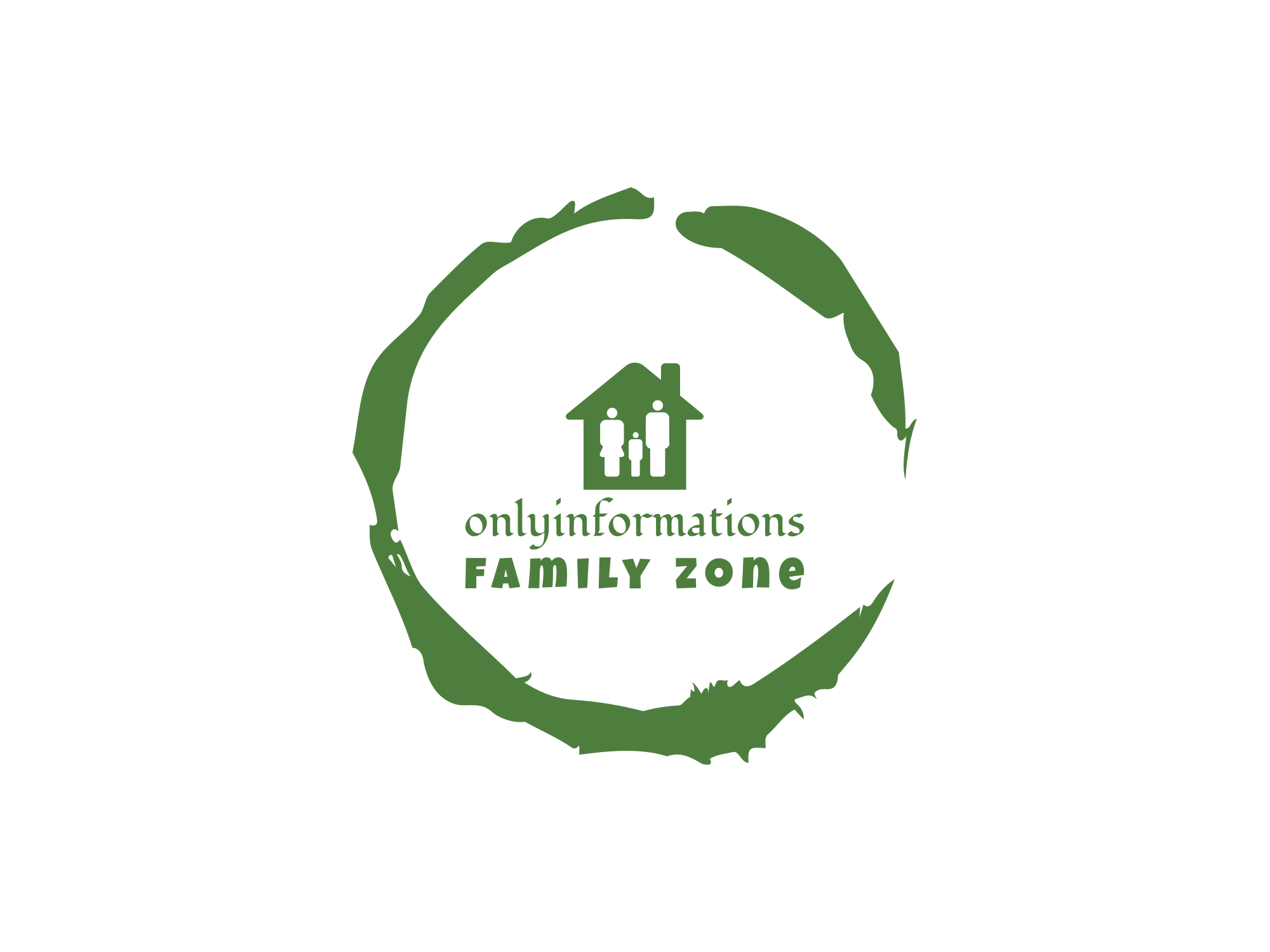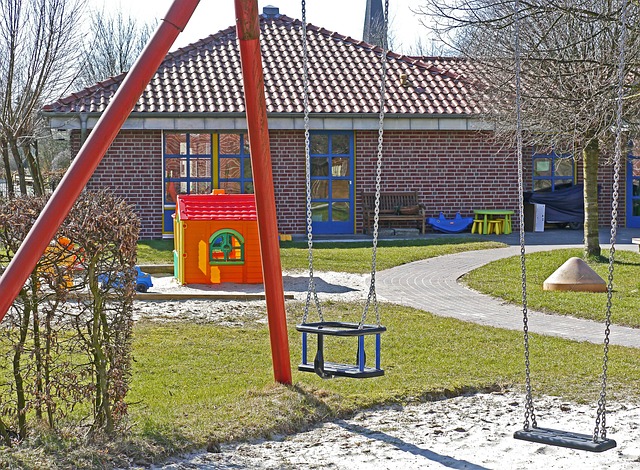Child Neglect
The importance of understanding child neglect and its heavy long-term impact within communities.
Child neglect is a distressing issue affecting children’s well-being and safety within communities. So there is a great need to address this sensitive issue as it highlights the critical need for safeguarding children and creating nurturing environments where they can thrive. So we can encompass various forms of inadequate care, including physical, emotional, educational, and medical neglect. Therefore by highlighting child neglect and its impact, we can raise awareness, promote prevention, and foster supportive communities for the well-being of all children.
There are several reasons that child neglect holds significant importance within communities. However, First and foremost, children are the future, and their well-being directly impacts the development and stability of society. Also, The hard fact is that neglected children often experience long-lasting physical, emotional, and cognitive consequences.
Furthermore, child neglect reflects the overall health of a community. Additionally, the higher neglect ratio can indicate underlying social, economic, and systemic issues that require attention. Another key point is, that by addressing child neglect, communities can work towards creating safer and more supportive environments, fostering healthy relationships, and breaking the cycle of neglect for future generations.
The Importance of Addressing Child Neglect:
Addressing child neglect requires a multi-faceted approach involving various stakeholders within communities. Key strategies to tackle child neglect include:
- Prevention: Prioritizing prevention efforts through comprehensive family support services, early childhood education, and parenting programs that enhance caregiver skills, resilience, and knowledge about child development.
- Early Identification and Intervention: Establishing systems for early identification of neglect, such as through healthcare providers, educators, and social services, to ensure timely intervention and support for at-risk families.
- Strengthening Support Systems: Enhancing community-based resources, such as accessible mental health services, affordable childcare, housing assistance, and substance abuse treatment programs, to address underlying issues contributing to neglect.
- Collaboration and Training: Encouraging cooperation among professionals, including social workers, educators, healthcare providers, and law enforcement, to improve communication, share best practices, and provide comprehensive care to neglected children.
- Public Awareness and Education: Promoting public awareness campaigns to educate communities about the signs of neglect, reporting mechanisms, and available support services. Eliminating stigmas associated with seeking help is crucial for fostering a supportive environment.

The Impact of Child Neglect:
Overall, child neglect can have profound and lasting effects on children, families, and communities. The impact of neglect can manifest in various ways:
Physical and Emotional Well-being: Significantly, neglected children may suffer from malnutrition, developmental delays, chronic health issues, and poor mental health. Lack of consistent nurturing and emotional support can lead to low self-esteem, attachment difficulties, and behavioural problems.
Educational Outcomes: Also, it’s been observed that neglected children often struggle academically, leading to lower educational attainment and reduced opportunities for their future. This can perpetuate cycles of poverty and limited social mobility.
Interpersonal Relationships: Straightway the children who suffer from inlay face challenges forming healthy relationships within their families and peers. However, they may struggle with trust, emotional regulation, and conflict resolution.
Societal Costs: Also child neglect has significant economic implications for communities. Hence the long-term consequences burden public resources, including increased healthcare costs, social services, and juvenile delinquency.
How to Ensuring the Well-being and Safety of Children
Child neglect is so sensitive in every aspect of it that it poses a severe threat to the well-being and safety of children. That’s the reason for making it iterative for society to address this critical issue. The word neglect entirely catches the possession of severe and lasting effects on a child’s physical, emotional, and cognitive development. So we can advocate for the necessary actions and interventions to protect vulnerable children, create nurturing environments, and secure their future well-being by highlighting the significance of addressing child neglect.
Protecting Physical Health:
Subsequently addressing child neglect is crucial for safeguarding the physical health of children. Therefore, Neglected children often face inadequate nutrition, lack of appropriate medical care, and exposure to hazardous environments. So, This can result in stunted growth and developmental delays and enhance the risk of accidents and injuries. By intervening early and providing access to essential healthcare and nutrition, communities can ensure that children grow up healthy and strong.
Fostering Emotional Well-being:
Child neglect significantly impacts a child’s emotional well-being. The absence of consistent care, nurturing, and emotional support can lead to feelings of abandonment, low self-esteem, anxiety, depression, and attachment difficulties. These emotional scars can persist into adulthood, affecting relationships, mental health, and overall life satisfaction. Addressing neglect enables communities to provide the emotional support and stability necessary for children to develop healthy self-concepts and emotional resilience.
Nurturing Cognitive Development:
Child neglect often deprives children of stimulating environments, educational opportunities, and intellectual engagement. Thereafter, a lack of cognitive stimulation can impede brain development, leading to learning difficulties, reduced educational attainment, and limited prospects. Thus, by addressing neglect and providing early intervention, communities can ensure that children get primary and quality education, enrichment programs, and supportive learning environments, setting the foundation for lifelong success.
Ensuring Safety and Protection:
Unquestionably child neglect exposes children to unsafe and unstable environments, increasing the risk of physical harm, exploitation, and abuse. Therefore, neglected children may lack proper supervision, live in hazardous conditions, or be exposed to domestic violence and substance abuse. However, by addressing neglect, communities can implement preventive measures, strengthen child protection services, and create support networks to ensure the provision of safety for every child.
Breaking the Cycle:
Addressing child neglect is crucial for breaking the intergenerational cycle of neglect and adversity. Neglected children often grow up with limited parenting skills, lacking positive role models and healthy relationships. By providing support, resources, and education to at-risk families, communities can empower parents and caregivers to break negative patterns, acquire essential parenting skills, and provide nurturing environments for their children. Breaking the cycle of neglect ensures a brighter future for the current generation.
How to Classify Child Neglect Regions wise.
Child Neglect is the collective attitudes of the parents and caregivers. By the way, we cannot assume that it can vary region-wise, but yes, as different regions and nationalities have variable attitudes. It must be affected on this subject as well. So let’s check the states by some of the developed cultural famous countries at this aspect.
Child Neglect in the USA
Child neglect in the United States is a pressing issue affecting countless children’s well-being and future. Therefore understanding the prevalence, impact, contributing factors, and child protection services related to child neglect is crucial for addressing this problem effectively. So shedding light on these aspects, we can work towards preventing and mitigating the detrimental effects of neglect on children and society.
Overview of Child Neglect in the United States:
We already understand the phenomenon of child neglect, precisely all kinds of conditions directly or indirectly related to children. Thats why the American Academy of Pediatrics estimates that over 4 million child maltreatment reports are made annually, with neglect accounting for approximately 70% of those cases.
Prevalence and Impact of Child Neglect on Children and Society In the USA:
Child neglect has far-reaching consequences for both individual children and society as a whole. The impact of negligence can be profound, affecting physical, emotional, and cognitive development. Neglected children are at increased risk of developmental delays, impaired social skills, educational difficulties, mental health disorders, and physical health problems. In the long term, neglect can contribute to cycles of poverty, crime, and reduced societal well-being.
Legal Framework and Child Protection Services Addressing Neglect:
Child neglect is addressed through a comprehensive legal framework and child protection services in the United States. Federal and state laws set the standards for identifying, reporting, and responding to neglect cases. Child Protective Services (CPS) agencies are vital in investigating reports, ensuring child safety, and providing intervention and support services to families affected by neglect. Additionally, mandatory reporting laws require professionals, such as teachers and healthcare providers, to report suspected neglect cases.
Child protection services aim to ensure the safety and well-being of children, promote family preservation when possible, and provide necessary interventions to address neglect and prevent further harm to children.

Child Neglect in the UK
This is a severe and concerning issue in the United Kingdom, affecting the well-being and safety of countless children. When we understand the situation, we can learn the seriousness of the government and organizations’ efforts, the importance of early intervention reputation, and other crucial social networks for effectively combating child neglect. By exploring these aspects, we can work towards creating a society that protects and nurtures the well-being of all children.
The Situation of Child Neglect in the United Kingdom:
This form of maltreatment encompasses failing to meet a child’s basic physical, emotional, educational, and medical needs. As well as consider this one of the worst kinds of child abuse in the UK. According to the (NSPCC), child neglect is the primary reason for child protection plans and intervention by social services.
Efforts to Address Child Neglect in the British System
The UK government and various organizations significantly addressed these initiatives to protect children, support families, and create safe and nurturing environments. Efforts include:
a. Legislation and Policy: The UK has established legislation and policy frameworks to address child neglect, including the Children Act 1989 and subsequent revisions. These laws emphasize the welfare and protection of children and provide the legal basis for intervention in cases of neglect.
b. Multi-Agency Approach: A multi-agency approach involves collaboration between social services, health professionals, educators, law enforcement, and community organizations. This collaborative approach ensures a coordinated response to child neglect cases and facilitates early intervention.
c. Training and Awareness: Organizing training professionals working with children to recognize and respond effectively to signs of neglect. Such awareness campaigns aim to educate the public about the impact of decay and the importance of reporting concerns.
Importance of Early Intervention and Prevention Strategies in The British Region
Early intervention is crucial in addressing child neglect and preventing long-term harm. By identifying and intervening in neglect cases at an early stage, the negative impact on children can be minimized. Early intervention strategies include:
a. Strengthening Parenting Skills: Providing support and resources to parents, including parenting programs, counselling services, and access to information on child development, can enhance their capacity to meet their children’s needs effectively.
b. Early Childhood Support: Offering quality early childhood education, healthcare services, and support programs for families can promote healthy child development and provide early identification of neglect or risk factors.
c. Community Engagement: Engaging the community in preventing child neglect through awareness campaigns, community-based programs, and support networks creates a collective responsibility for child well-being.
Role of Social Services and Support Networks:
Social services and support networks are crucial in combating child neglect in the UK. These entities provide various services, including:
a. Assessing and Investigating Neglect Cases: Social workers assess and investigate allegations of neglect, working closely with families to develop intervention plans and access necessary support services.
b. Offering Support and Intervention: Social services provide support and intervention programs tailored to meet the specific needs of families affected by neglect. These services may include counselling, parenting support, financial assistance, and access to healthcare and educational resources.
c. Collaborating with Other Professionals: Social services collaborate with education, healthcare, and law enforcement professionals to ensure a coordinated response and holistic support for children and families.
Child Neglect in Canada
On a serious note, this has become a concerning issue within Canadian communities, posing significant threats to the well-being and development of children. We need to take at every stage to recognize Indigenous communities’ unique challenges, understand the child welfare systems and policies in place, and prioritize cultural sensitivity in interventions are crucial steps toward preventing and addressing neglect. Eventually, by exploring these aspects, we can work towards building a society that protects and supports the well-being of all children in Canada.
Child Neglect within Canadian Communities:
Like other regions, it is also considered a failure when any child cannot get their basic needs and protection, affecting children across Canada. Afterwards, it brings the impact on detrimental physical, emotional, and cognitive consequences. The effects of neglect may arise due to several other factors, including parental substance abuse, mental health issues, poverty, social isolation, and intergenerational cycles of decay.
Unique Encounters in Native Communities:
The native communities in Canada face specifically diverse encounters concerning child neglect. So these encounters are rooted in historical trauma, cultural disruption, social inequities, and inadequate resource access. This should be understood seriously, and addressing these challenges is essential for effective interference.
Canadian Welfare Systems and their Policies:
The government of Canada has already established child welfare systems and policies to prevent and address child neglect. Every state has child protection legislation but belongs to the central government SOPs. Furthermore, these welfare supports are responsible for investigating neglect cases and ensuring the safety of children. However, the key objective of these systems is to provide support, intervention, and protective services to families at risk and ensure the well-being of children.
Significance of Cultural Compassion in Interferences:
Cultural sensitivity is crucial in addressing child neglect effectively, particularly within Indigenous communities. Because It involves recognizing and respecting cultural diversity, historical context, and traditional practices. Culturally sensitive interventions:
a. Collaboration and Commitment: On the whole, Effective interventions involve collaboration with indigenous communities, elders, and leaders. So Engaging community members in decision-making ensures that interventions are culturally appropriate and respectful.
b. Culturally Appropriate Services: Hence, Providing culturally appropriate services means tailoring interventions to Indigenous families’ specific needs and values. Thereafter it may involve incorporating indigenous languages, traditions, and healing practices into support programs.
c. Supporting Cultural Identity: So far, recognizing and supporting the cultural identity of Indigenous children is essential for their well-being. Therefore, Connecting with their cultural heritage, language, and traditions can strengthen their sense of belonging and resilience.
d. Suffering-Well-Versed Care: To begin with taking a trauma-informed approach acknowledges the historical trauma experienced by Indigenous communities. Hence It involves understanding the impact of colonization, fostering a safe environment, and providing support that addresses the underlying trauma.

What are the Common Risk Factors and Consequences of child neglect situation?
Child neglect is a grave issue affecting children’s well-being and development in various countries, including the USA, UK, and Canada. Additionally Identifying the common risk factors associated with neglect, and understanding its short-term and long-term consequences on children. Also, we can consider recognizing the importance of early identification, intervention, and support are crucial steps toward addressing this critical issue. By examining these aspects, we can work towards ensuring the safety of vulnerable children and their families.
Common Risk Factors Contributing to Child Neglect:
Together with a combination of risk factors often influences child neglect. However, Some common risk factors observed across the USA, UK, and Canada include:
a. Poverty and Socioeconomic Disadvantage: Families facing financial hardship often struggle to provide for their children’s basic needs, increasing the risk of neglect.
b. Substance Abuse and Mental Health Issues: Parental substance abuse, including alcohol and drug addiction, and mental health issues can impair a caregiver’s ability to consistently meet their child’s needs.
c. Parental Stress and Lack of Parenting Skills: High levels of stress, limited coping mechanisms, and inadequate parenting skills can hinder a caregiver’s capacity to provide appropriate care and attention.
d. Social Isolation and Lack of Support Networks: Limited social connections, social isolation, and a lack of support networks can leave parents without the necessary resources and assistance, making them more susceptible to neglect.
What Are the Short-Term and Long-Term Concerns of Neglect:
Child neglect has severe effects on development, well-being, and the future. The impact of negligence can be observed in both the short-term and long-term:
Short-Term Consequences
Neglected children may experience physical health problems, malnutrition, poor hygiene, and developmental delays. They may exhibit emotional and behavioural difficulties, including withdrawal, aggression, anxiety, and attachment issues. Educational outcomes are also affected, with neglect often leading to poor school performance and academic struggles.
Long-Term Consequences
The long-term effects of neglect can be far-reaching. Neglected children are at a higher risk of experiencing mental health disorders, such as depression, anxiety, and post-traumatic stress disorder. They may face challenges in forming healthy relationships, exhibit difficulties in self-regulation, and engage in high-risk behaviour including substance abuse and delinquency. Neglect can contribute to intergenerational cycles of abuse and neglect, perpetuating the problem across generations.
How To Address Early Identification, Intervention, and Support:
Early identification, intervention, and support are crucial in addressing child neglect effectively:
a. Awareness and Training: Professionals working with children, which include teachers, healthcare providers, and social workers, require adequate training to recognize the signs of neglect and report concerns promptly. Community awareness campaigns educate the public about the importance of early identification and intervention.
b. Multi-disciplinary Approach: Collaboration among professionals from various sectors, including social services, healthcare, education, and law enforcement, is essential for early identification and coordinated intervention. Sharing information, expertise, and resources helps ensure a comprehensive response to neglect cases.
c. Supposing neglect cases or Families: Providing accessible and appropriate support services to families at risk of neglect is vital. These services may include parenting programs, counselling, substance abuse treatment, mental health support, and assistance with financial resources.
d. Long-Term Support: Supporting children and families affected by neglect is crucial to facilitate recovery and prevent reoccurrence. Ongoing monitoring, counselling, and access to community resources can aid in building resilience and promoting positive outcomes.
What are the standard Preventive Measures and Interventions for avoiding or reducing child neglect?
Addressing child neglect requires a comprehensive approach that includes preventive measures and effective interventions. In the USA, UK, and Canada, efforts are being made to prevent child neglect and respond to cases proactively. This article will explore each country’s preventive measures and interventions, focusing on community-based programs, parenting support initiatives, and education campaigns by highlighting successful interventions and best practices to create a safer environment for children and families.

Preventive Measures and Interventions in the USA:
In the United States, several preventive measures and interventions are in place to address child neglect:
a. Community-Based Programs: Community organizations, non-profits, and government agencies collaborate to implement programs that promote family resilience, educate parents on child development, and provide support services. These programs offer resources such as home visits, mentoring, and parenting classes to help families navigate challenges and reduce the risk of neglect.
b. Parenting Support Initiatives: This initiative provides parents with the necessary skills and knowledge to meet their children’s needs. These initiatives include evidence-based parenting programs that promote positive discipline, communication, and child-rearing practices. Parenting helplines and online resources are also available to provide guidance and support.
c. Education Campaigns: This successful campaign aims to educate the community about the signs of child neglect, the importance of reporting concerns, and available support services. These campaigns target professionals, community members, and the general public to raise awareness, reduce stigma, and encourage early intervention.
Preventive Measures and Interventions in the UK:
In the United Kingdom, various preventive measures and interventions are implemented to address child neglect:
a. Early Help and Support: Early intervention services support families at risk of neglect. These services offer a range of assistance, including family support workers, counselling, and access to community resources. The focus is identifying and addressing issues before they escalate, promoting children’s and parents’ well-being.
b. Multi-Agency Collaboration: Multi-agency partnerships involving social services, healthcare professionals, educators, and community organizations work together to identify neglect cases and develop tailored intervention plans. These collaborations ensure a coordinated response and comprehensive support for families.
c. Education and Training: Professionals working with children receive training on recognizing and responding to signs of neglect. Teachers, healthcare providers, and social workers are crucial in identifying vulnerable children, reporting concerns, and facilitating appropriate interventions.
Preventive Measures and Interventions in Canada:
Canada has implemented various preventive measures and interventions to combat child neglect:
a. Strengthening Families: Programs focus on strengthening families’ protective factors, such as building resilience, enhancing parenting skills, and improving access to social support networks. These initiatives aim to prevent the occurrence of neglect by addressing underlying risk factors and providing a safe and nurturing environment for their children.
b. Community-Based Supports: Community organizations and indigenous services collaborate to develop culturally sensitive programs that address the specific needs of indigenous communities. Furthermore, these programs aim to provide families with support, education, and resources and ensure that cultural values and traditions are integrated into interventions.
c. Education and Awareness: Educational campaigns and training initiatives raise awareness about child neglect and its consequences. They equip professionals, community members, and families with the knowledge to identify signs of decay, report concerns, and access support services.
What is the Collaboration and Community Engagement?
Addressing child neglect requires a collective effort involving various stakeholders, including government agencies, community organizations, and healthcare providers. However, Collaboration and community engagement are vital in raising awareness, reducing stigma, and supporting families at risk of neglect. Also by emphasizing the importance of cooperation and exploring the role of community engagement, we can create a cohesive network that effectively combats child neglect and ensures the well-being of children and families.
Importance of Collaboration Among Stakeholders:
Collaboration among stakeholders is essential in the fight against child neglect:
a. Government Agencies: Government agencies, such as child welfare departments and social services, provide the framework and resources necessary to prevent and address neglect. Collaboration among these agencies ensures a coordinated approach, efficient information sharing, and allocation of appropriate interventions.
b. Community Organizations: Community organizations, including non-profits, advocacy groups, and local service providers, play a crucial role in identifying at-risk families, offering support programs, and raising awareness about child neglect. Collaborating with these organizations strengthens the support network and expands outreach efforts.
c. Healthcare Providers: Healthcare providers, including doctors, nurses, and mental health professionals, often have direct contact with children and their families. Collaborating with these professionals ensures the timely identification of neglect cases and facilitates access to necessary services and interventions.
Role of Community Engagement:
Community engagement is instrumental in addressing child neglect effectively:
a. Raising Awareness: Engaging the community through educational campaigns, workshops, and community events raises awareness about child neglect. This includes educating individuals about the signs and consequences of decay and their role in reporting concerns and supporting at-risk families.
b. Reducing Stigma: Community engagement efforts can help reduce the stigma associated with child neglect. Community members are more likely to support families facing challenges by promoting understanding and empathy, creating a nurturing and non-judgmental environment for those in need.
c. Support for Families: Community engagement initiatives provide support networks for families at risk of neglect. This can involve connecting families with local resources, peer support groups, and parenting programs that empower parents and strengthen their caregiving abilities.
d. Collaboration with Indigenous Communities: Engaging with Indigenous communities is crucial, given their unique challenges and cultural contexts. Collaboration ensures that interventions are culturally sensitive, respectful of traditions, and aligned with community values and practices.
Successful Models of Collaboration and Community Engagement:
Additionally, there are several successful models of collaboration and community engagement exist:
a. Multi-Disciplinary Teams: Altogether establishing multi-disciplinary teams brings together professionals from different fields to work collectively on child neglect cases. Furthermore, these teams collaborate on assessments, intervention planning, and ongoing support, ensuring a holistic approach.
b. Community Task Forces: The community task forces bring together representatives from government agencies, community organizations, and community members to identify local needs, develop prevention strategies, and coordinate resources. These task forces foster community ownership of the issue and drive sustainable change.
c. Parent-Community Partnerships: Even though Involving parents and community members in program development and decision-making empowers them to take ownership of child neglect prevention. On the whole, Parent-teacher associations, neighbourhood groups, and community forums provide platforms for dialogue, collaboration, and sharing of ideas and resources.
d. Information Sharing and Collaboration Platforms: Developing information-sharing platforms and databases facilitate stakeholder communication. This allows for efficient referrals, timely case updates, and a cohesive approach to providing support services.
What is the minimum sentence for child neglect?
Consequently, the minimum sentence for child neglect varies depending on the jurisdiction and the case’s specific circumstances. Certainly, child neglect is a serious offence that involves the failure to provide adequate care, supervision, or support for a child, resulting in harm or endangerment. Thereafter the legal system aims to ensure the safety and well-being of children and holds individuals accountable for neglecting their responsibilities as caregivers.
In the United States, child neglect laws fall under state jurisdiction, and each state has its statutes and sentencing guidelines. Generally, the minimum sentence for child neglect can range from probation, mandatory counselling, or parenting classes to a period of incarceration.
As long as the neglect’s severity, previous criminal history, child age, and other aggravating factors can influence the minimum sentence. However, In cases where child neglect leads to serious harm or endangerment, the minimum punishment can be more severe.
Another key point is that it is essential to consult the specific laws and sentencing guidelines of the jurisdiction where the offence occurred to determine the minimum sentence for child neglect in that particular jurisdiction. Additionally, the discretion of the judge and the unique circumstances of each case can also impact the final sentencing outcome. So It’s better to consult legal counsel from an experienced attorney is essential for understanding the potential penalties and building an appropriate defense.

What Are The Contributing Factors to Child Neglect:
Altogether several factors contribute to child neglect, and understanding them is crucial for effective prevention and intervention. Some of the key contributing factors include:
Poverty: Families living in poverty face numerous challenges, including limited access to resources, housing instability, and inadequate healthcare, making them more vulnerable to neglect.
Substance Abuse: Substance abuse, including drug and alcohol addiction, can impair parents’ ability to provide proper care and attention to their children, increasing the risk of neglect.
Parental Stress and Mental Health: High levels of parental stress, mental health issues, and inadequate coping mechanisms can hinder a caregiver’s ability to consistently meet their child’s needs.
Social Isolation: Lack of support networks, limited social connections, and isolation can contribute to neglect by reducing parental availability of resources and assistance.
Final Word On Child Neglect
We cannot emphasize this whole subject in one article, but we tried to comprise the most important practical points for our readers here. However, in the final words, we can summarize the whole article for clarity and avoid confusion.
What we need to understand
The blog reader should understand that child neglect is a pressing issue that demands attention within communities. Therefore, By recognizing the importance of addressing child neglect and understanding its impact, we can foster nurturing environments that prioritize the well-being and safety of children. Hence through prevention, early intervention, strengthening support systems, collaboration, and public awareness, communities can create a protective network for vulnerable children. So we can only break the cycle of neglect and build resilient communities through collective effort and a commitment to child welfare.
Our Collective Responsibility
The significance of addressing child neglect cannot be overstated. Furthermore, our collective responsibility is to protect and nurture the well-being and safety of children within our communities. As long as addressing neglect, we can create environments that promote physical health, emotional well-being, cognitive development, and security. However, Through early intervention, access to vital resources, supportive programs, and community collaboration, we can break the cycle of neglect and allow children to reach their full potential. Let us stand together to ensure that every child grows up in a caring and nurturing environment, free from neglect and harm.
It’s Not as simple as that
However, addressing child neglect requires a multi-faceted approach involving collaboration among various stakeholders and active community engagement. Throughout this article, we have explored the prevalence of child neglect in the USA, UK, and Canada, the contributing factors, the short-term and long-term consequences on children, and the legal frameworks and child protection services in place. We have also delved into the common risk factors, the importance of early identification and intervention, and the preventive measures and interventions implemented in these countries.
Comparatively, Collaboration among government agencies, community organizations, and healthcare providers is crucial in creating a cohesive network to combat child neglect. Therefore these stakeholders can share information, expertise, and resources by working together, ensuring a coordinated and comprehensive response to neglect cases. Furthermore, community engagement is vital in raising awareness, reducing stigma, and supporting at-risk families. Engaging the community fosters a sense of responsibility and empathy, creating nurturing environments where children can thrive.
Efforts as much as we can
Consequently recognizing that the fight against child neglect is an ongoing endeavor is imperative. Therefore continued efforts are necessary to increase awareness, allocate resources, and provide support systems that protect children and create nurturing communities. However, this includes advocating for increased funding for prevention programs, enhancing training for professionals working with children, and promoting early intervention strategies.
In conclusion, let us commit ourselves to working collaboratively, engaging our communities, and providing the necessary awareness, resources, and support to protect children from neglect. Together, we can create a society where every child can get their fundamental rights and thrive in a safe and nurturing environment.

















